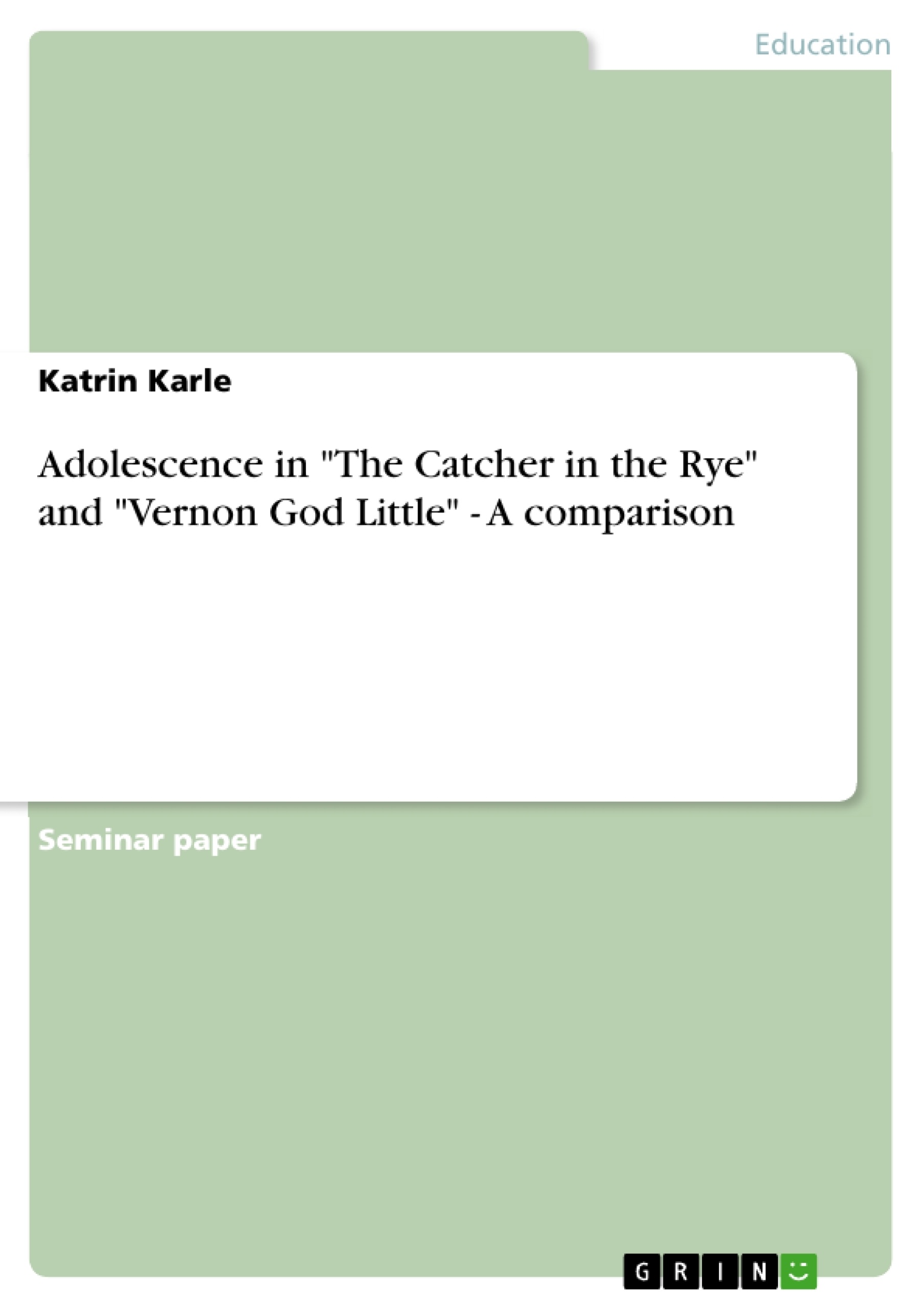The term “adolescence” describes the phase of life between late childhood and adulthood. It contains not only the physical maturation but particularly the psychological and mental development from a child to an autonomous, responsible adult. Also literature has ever and anon created adolescent protagonists who have to deal with typical problems of coming of age. A prime example for such a novel of initiation is “The Catcher in the Rye”. This novel nearly fulfils all aspects a novel of initiation has to deal with. Although “The Catcher in the Rye” was published sixty years ago, it still finds general approval to people all over the world. Another very successful novel of initiation is DBC Pierre‟s “Vernon God Little” which was written in 2003 and won the Man Booker Prize in the same year. The Daily Mail described the 15-year old protagonist Vernon Gregory Little as “one of the most engaging narrators since Catcher in the Rye´s Holden Caulfield”1 and Sam Sifton from the New York Times says that Vernon Gregory Little is a “Holden Caulfield on Ritalin”2. There is no doubt that these two novels have considerable similarities: In both novels, the main character is a male adolescent who tells his story as a first person narrator. Both stories have their sets in the United States and both deal with issues concerning adolescence. I want to research which further similarities these two books have, in particular concerning adolescence. Therefore I am going to take a deeper look into typical issues these two adolescents have to deal with. First of all, I am going to give a short overview about the plot to the reader so the reader understands further issues of my work. Then, I will examine typical signs for adolescence like external and internal conflicts and language use of the protagonists of “Vernon God Little” and “The Catcher in the Rye” as well as the historical context of these two books. I am going to examine all these aspects in order to find out how the two novels explore the problems associated with adolescence and the narrators‟ messages regarding society.
Table of Contents
- Introduction
- Plot summary
- The Catcher in the Rye
- Vernon God Little
- External conflicts of the main character
- Holden Caulfield
- Vernon Little
- Internal conflicts of the main characters
- Holden
- Vernon
- Language of the main characters
- Language of Holden
- Language of Vernon
- Historical context of the novel
- The Catcher in the Rye
- Vernon God Little
- Conclusion
Objectives and Key Themes
This paper explores the themes of adolescence as depicted in "The Catcher in the Rye" and "Vernon God Little." It seeks to compare and contrast these two novels of initiation, focusing on the main characters' experiences and perspectives on coming of age. The paper aims to analyze the similarities and differences in the protagonists' external and internal conflicts, language use, and the historical context of each novel.- The struggles of adolescents navigating the transition from childhood to adulthood
- The internal and external conflicts faced by teenage protagonists
- The unique language and voice of adolescent narrators
- The influence of social and historical contexts on adolescent experiences
- The portrayal of societal pressures and expectations on young people
Chapter Summaries
- The introduction provides an overview of the concept of adolescence and its representation in literature, focusing on the novels "The Catcher in the Rye" and "Vernon God Little" as examples of novels of initiation.
- The plot summary section outlines the main events in each novel. For "The Catcher in the Rye," it covers Holden Caulfield's expulsion from school, his weekend in New York, his encounters with various people, and his search for meaning and connection. For "Vernon God Little," it introduces Vernon Gregory Little, his involvement in a high school massacre, and his subsequent journey as a fugitive, facing societal judgment and betrayal.
- The chapter on external conflicts examines the challenges and confrontations faced by Holden Caulfield and Vernon Little in their respective narratives.
- The chapter on internal conflicts delves into the psychological struggles and inner turmoil experienced by Holden and Vernon as they grapple with their identities, relationships, and the pressures of growing up.
- The chapter on the language of the main characters analyzes the linguistic styles and unique voices employed by Holden and Vernon, exploring how their language reflects their personalities, experiences, and perspectives.
- The chapter on historical context examines the sociocultural and historical influences that shape the narratives of "The Catcher in the Rye" and "Vernon God Little."
Keywords
The main keywords and themes of this analysis include adolescent development, coming-of-age narratives, first-person narration, external and internal conflicts, language style, social commentary, historical context, and societal expectations. The focus is on comparing and contrasting the experiences and perspectives of Holden Caulfield from "The Catcher in the Rye" and Vernon God Little from "Vernon God Little," examining their shared struggles and unique challenges as adolescent protagonists.- Quote paper
- Katrin Karle (Author), 2011, Adolescence in "The Catcher in the Rye" and "Vernon God Little" - A comparison, Munich, GRIN Verlag, https://www.grin.com/document/198058



